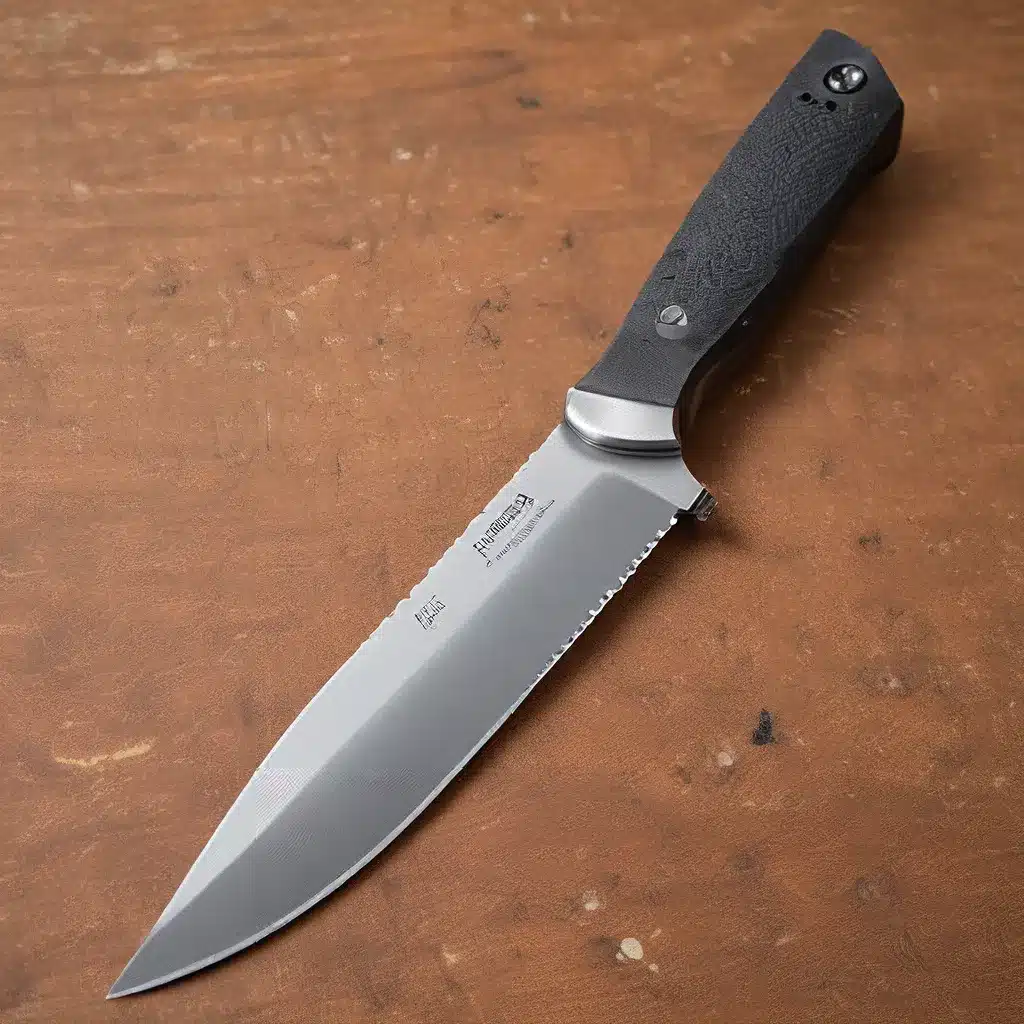
As an avid knife enthusiast, I’ve come to learn that the true power of a blade lies not just in its sharpness, but in the intricate design of its edge. While a razor-sharp straight edge may be the go-to for many, the humble serrated knife holds a unique set of capabilities that can make it an invaluable tool in the right situations.
Slicing Through the Myths
Now, I know what you’re thinking – serrated knives are just for bread and tomatoes, right? Wrong! These specialized blades are like the chameleons of the knife world, able to adapt and excel in a variety of tasks that would leave a straight-edged knife struggling.
Think about it – when was the last time you tried to saw through a thick loaf of bread with a smooth blade? You’d end up with a mangled mess, right? But a good serrated knife? It’ll glide through that crusty exterior like a hot knife through butter. And it’s not just bread – those jagged teeth can make quick work of tough-skinned produce, from juicy tomatoes to robust squashes.
The Cutting Edge of Versatility
But the secret power of serrated knives doesn’t stop there. These unsung heroes of the kitchen can also tackle tasks that would leave a straight edge quivering in its sheath. Ever tried to slice through a thick-crusted pie or a crisp-skinned roast? A serrated blade will saw through those with ease, preserving the delicate texture and presentation of your culinary masterpiece.
And let’s not forget about those situations where precision is key. When you need to delicately trim the fat from a steak or butterfly a chicken breast, a serrated knife’s tiny teeth can give you the control and finesse that a larger, straight-edged blade simply can’t match.
The Versatile Blade
But the versatility of serrated knives doesn’t stop at the kitchen counter. These handy tools can also be invaluable in the great outdoors. Think about pitching a tent or cutting through stubborn ropes or thick branches – a serrated edge can make quick work of those tasks, where a straight blade might struggle or even become damaged.
And let’s not forget about the safety factor. While a straight edge may be sharper, a serrated knife’s unique design can actually make it safer to use in certain situations. The serrations help to grip and “catch” the material you’re cutting, reducing the risk of the blade slipping and causing injury.
Sharpening the Debate
Of course, no discussion of serrated knives would be complete without addressing the age-old debate surrounding sharpening. It’s true that those jagged teeth can make it a bit more challenging to maintain a razor-sharp edge compared to a straight blade. But with the right techniques and tools, even a serrated knife can be kept in prime cutting condition.
And let’s be honest – how often do you really need that scalpel-like edge on your everyday kitchen or outdoor knife? For most tasks, a well-maintained, slightly dulled serrated blade can still outperform a straight edge any day.
Embracing the Serrated Specialty
So, the next time you reach for a knife, I challenge you to think beyond the classic straight edge and consider the unique advantages of a good serrated blade. Whether you’re tackling tough kitchen tasks, embarking on outdoor adventures, or just looking for a versatile tool to have on hand, these specialized knives can be true hidden gems.
Just remember – the true power of a serrated knife lies not in its sharpness, but in its ability to adapt and excel in a wide range of situations. So, don’t be afraid to let those jagged teeth do the work and embrace the serrated specialty.
And hey, if you’re in the market for a new knife, be sure to check out the incredible selection at HermanKnives.net – they’ve got a wide range of high-quality serrated blades that are sure to make your next culinary or outdoor adventure a breeze.


